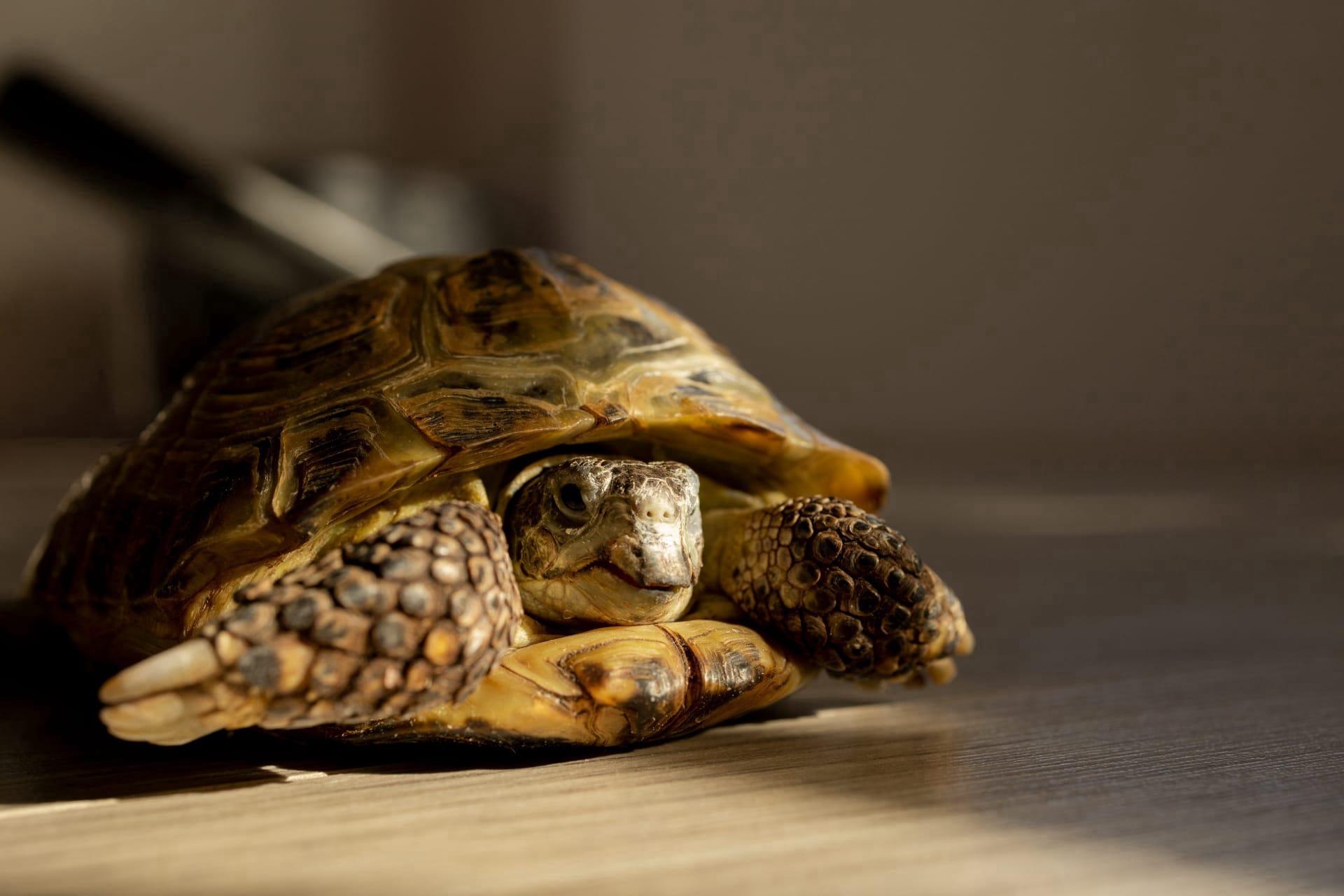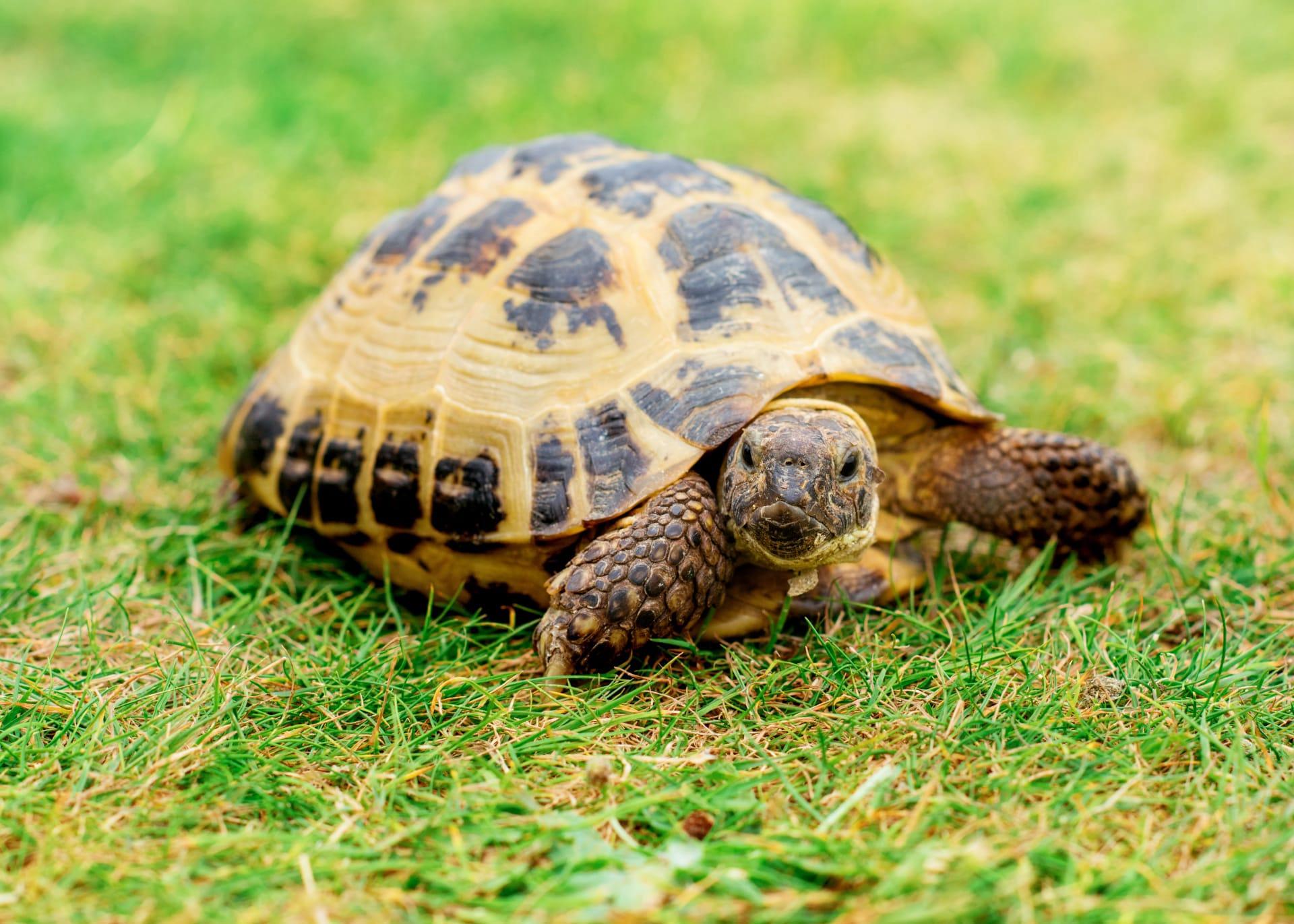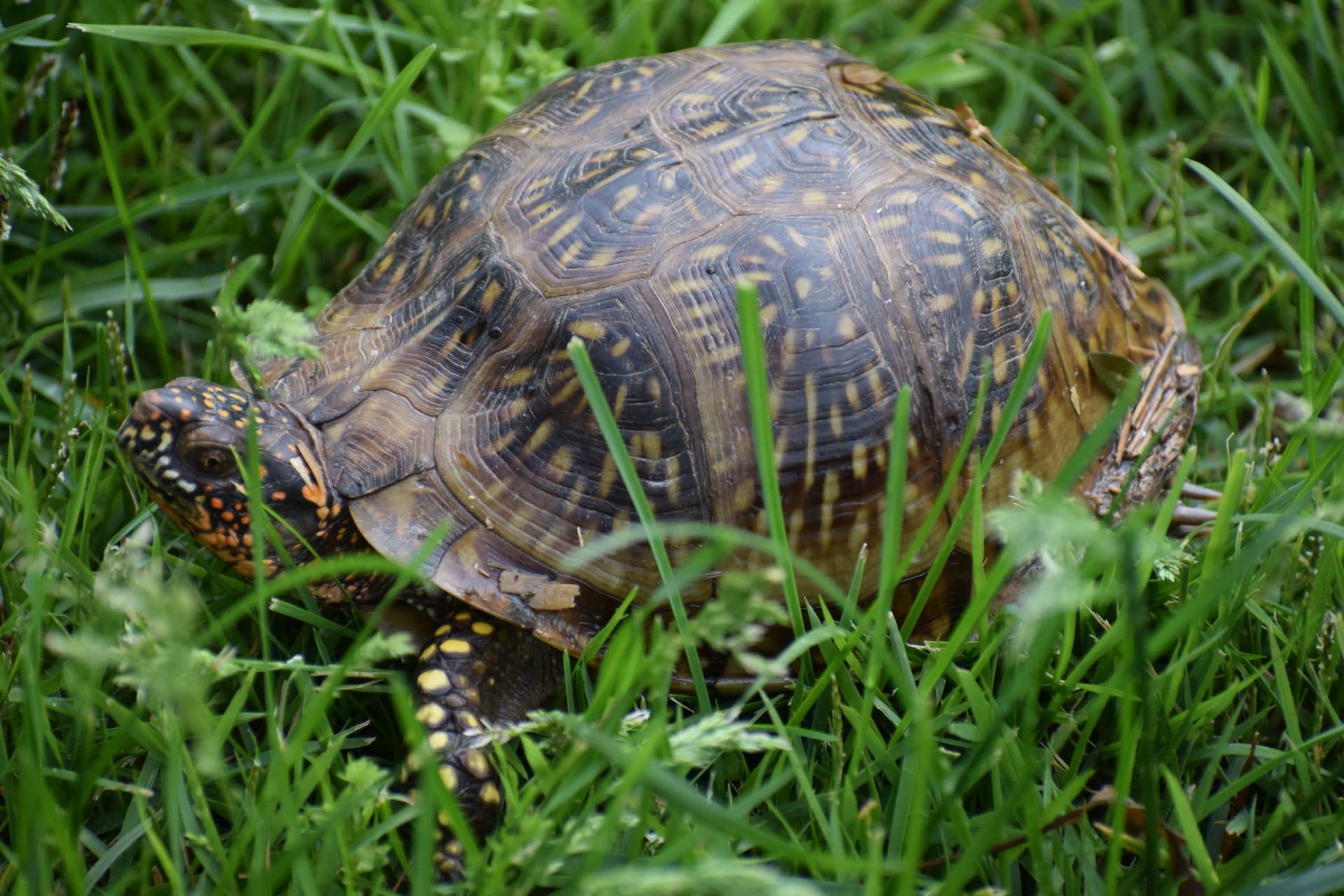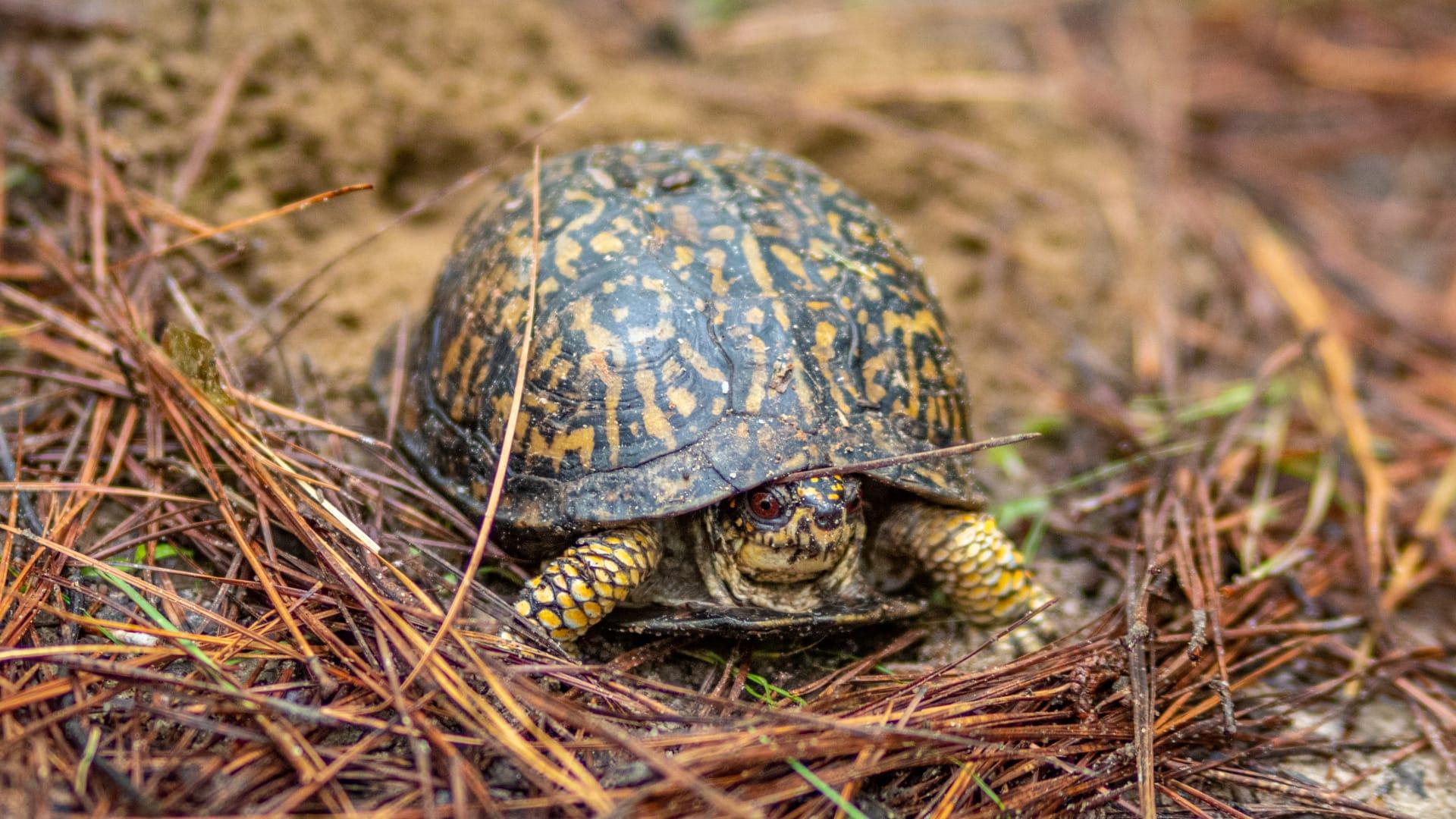1
Box turtles, known scientifically as Terrapene, are a type of North American tortoise famous for their hinged shell that allows them to completely close up, hiding their head, limbs, and tail from predators. This unique feature gives them the name 'box' turtle. Their shells are highly domed, and when closed, they resemble a box with a hinged lid. The plastron, or the bottom part of the shell, has a hinge near the front and back, enabling this remarkable defensive mechanism. The average shell length of an adult box turtle ranges from 4.5 to 6 inches, making them relatively small compared to other tortoise species.
Another fascinating aspect of box turtles is their longevity and aging process. These creatures are known for their long lifespan, often living for more than 50 years in the wild, with some individuals even reaching over 100 years. Unlike many animals, box turtles don't show obvious signs of aging like graying or balding. Instead, their aging can be somewhat tracked by the number of growth rings on their shells, similar to tree rings. However, after a certain age, these rings become less distinct, making it challenging to determine their exact age. This incredible longevity makes box turtles one of the longest-living vertebrates on land.

2
Box turtles have a highly varied diet, which contributes to their adaptability in different environments. These omnivores eat a wide range of food, including insects, worms, snails, berries, mushrooms, and even carrion. In captivity, their diet can be supplemented with leafy greens and other vegetables. This dietary flexibility helps them survive in various habitats, from moist forested areas to dry grasslands. Interestingly, the diet of a box turtle can shift with age. While younger turtles tend to consume more animal-based foods, adult turtles often lean towards a more plant-based diet.
One of the lesser-known facts about box turtles is their keen sense of smell, which plays a crucial role in their survival. They rely heavily on their olfactory abilities to find food and navigate their environment. This strong sense of smell is particularly useful when searching for food hidden under leaves or soil. Additionally, box turtles use their sense of smell to recognize individual turtles, which is important for social interactions and mating. This heightened sense of smell is a key adaptation that has enabled box turtles to thrive in diverse environments.

3
Box turtles have a unique way of regulating their body temperature, known as thermoregulation. Unlike humans, they can't generate their own body heat and depend on external sources to maintain their temperature. They do this by basking in the sun to warm up and retreating to shaded or cooler areas to cool down. This behavior is crucial for their digestion and overall health. Interestingly, box turtles are known to be quite particular about their body temperature, often moving between sun and shade multiple times a day to achieve the perfect balance.
Another fascinating trait of box turtles is their homing ability. Studies have shown that box turtles have a strong sense of location and can navigate back to their home range even when they are moved several kilometers away. This remarkable navigational skill is believed to be linked to their ability to sense the earth's magnetic field, similar to birds and sea turtles. This homing instinct is vital for their survival, as it helps them find their preferred habitats, food sources, and mating areas. It's also a reason why relocating box turtles can be harmful to their wellbeing, as they often attempt to return to their original location, facing various dangers along the way.

4
Box turtles display a wide range of shell colors and patterns, which can vary significantly among individuals. These patterns are not just for show; they play an important role in camouflage. The shell's coloration can range from brown and black to vivid oranges and yellows, often with distinctive markings that help them blend into their natural habitat. This camouflage is crucial for avoiding predators, especially for young turtles who are more vulnerable. As box turtles age, their shell color can fade, and the patterns may become less pronounced, but they still retain their basic color scheme.
Reproduction in box turtles is another intriguing aspect. Female box turtles have the remarkable ability to store sperm for several years, allowing them to fertilize eggs long after mating. This adaptation is particularly useful as it allows females to lay viable eggs even in the absence of males. Box turtles typically breed in the spring and lay their eggs in the early summer. The female digs a nest in the ground, lays her eggs, and covers them. These eggs then incubate for about 70 to 90 days before hatching. The temperature during incubation can determine the sex of the hatchlings; warmer temperatures tend to produce females, while cooler temperatures produce males.

5
Box turtles have a strong connection with their local environment, making them excellent indicators of environmental health. Since they are sensitive to changes in their habitat, such as pollution or habitat destruction, a decline in box turtle populations often signals broader environmental issues. Conservationists use box turtle populations to gauge the health of ecosystems and to identify areas that need protection or restoration.
Box turtles have a special place in cultural folklore and mythology, particularly among Native American tribes. For some tribes, the box turtle symbolizes longevity, perseverance, and the earth itself. The turtle's shell, with its distinctive pattern of 13 large scutes (plates) on the carapace, is thought to represent the 13 moons of the lunar year. This cultural significance highlights the box turtle not just as a fascinating biological creature, but also as an important symbol in human culture, representing resilience and the cycles of nature.